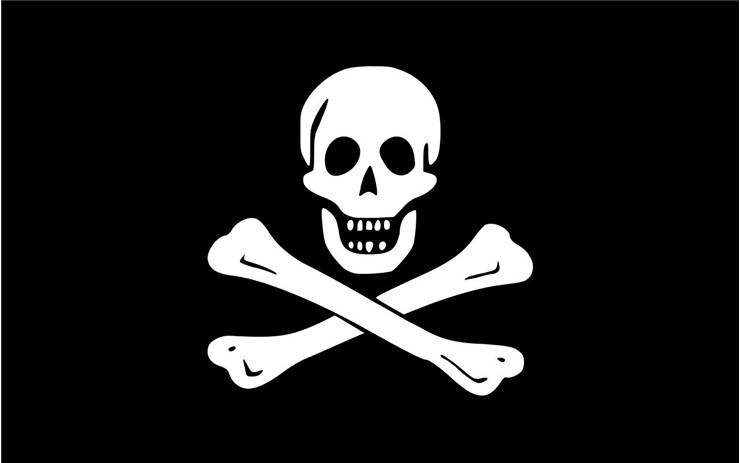Jolly Roger Flag Meaning
In the modern times, the often-romanticized era known as Golden Age of Piracy cannot be imagined without the signature flags that pirate ships proudly showcased during boardings of merchant ships, raids of coastal cities or heated battles against naval authorities who chased them across seven seas. The flag that is remembered today as “pirate flag” in fact uses a design that very few actual pirates used, and it has a name whose origin can nobody reliably pinpoint.
The origins of Jolly Roger flag in its most common form known today (black flag with white human skull and crossbones below it) started being used in early 1710-1720s by three famous pirate captains - "Black Sam" Bellamy (who was believed to have become one of the most richest pirate captains in history after only 1 year of sea raids on merchant ships), Edward England (captain from 1717 to 1720) and John Taylor (who led the vote for removing Edward England from the position of pirate captain). Those three pirate captains popularized the traditional Jolly Roger flag across the world, although contemporary and modern historians managed to discover many more clues about origins of first pirate flags and the introduction of its most well-known type.
The first mention of the name for the pirate flag was recorded in 1694 with the name “Red Jack” (French privateers called it “Red Jack” or “pretty red”). During that time majority of pirate flags was red or black, but their central icon was not a skull, but a skeleton which often held a spear or pierced a red heart with that spear. This skeleton design was most famously promoted by pirate captains such as Blackbeard, Edward Lowe and Francis Spriggs. Other designs that were remembered by history come from the wealthiest pirate of all time Henry Every, who used red flag that featured a side view of the white skull with crossbones beneath it. He reportedly also sometimes used black version of that flag. Famous Calico Jack Rackham used Another popular design. His Jolly Roger flag consisted of black background, white human skull and two crossed swords beneath it.
Name “Jolly Roger” was used in medieval England as a generic term of jovial and carefree man, but since the 17th century that name was often a symbol of a grinning skeleton. Pirates of that era started more and more using skeletons that were painted on black or red flags. Flags themselves, of course, were not showcased all the times on the masts of pirate ships. They were mostly used only during the times when pirates wanted to announce their presence to nearby ships, enabling them to remain inconspicuous while they visited ports and more secure areas of the sea that were patrolled by authorities or enemy agents.
The symbol of a human skull with crossbones beneath it is also a crucial symbol in a medieval European history. Ever since 15th-century skull and crossbones were viewed as a symbol of death on military gear, poisonous substances and memento mori on tombstones and entrances to cemeteries (especially in Spain).
